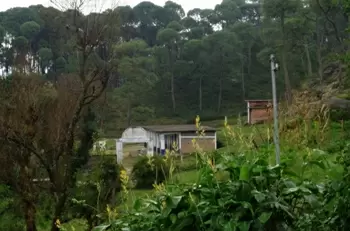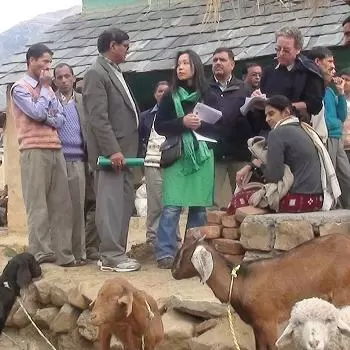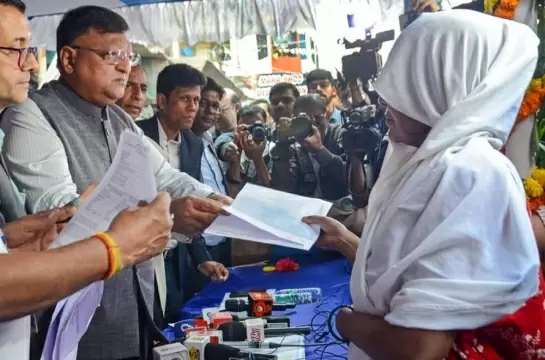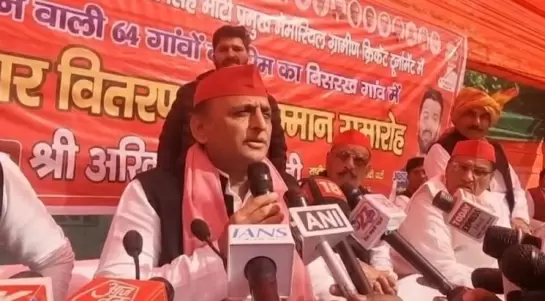A 'watershed' project transforms 600 villages in Himachal Pradesh
10-October-2011
Vol 2 | Issue 40
An integrated approach in a Rs.365-crore project funded by the World Bank appears to have worked wonders in some 600 villages in the hills of Himachal Pradesh, fetching higher self-sustaining incomes and literacy for its residents.
Take the panchayat of Gopalpur. It has three villages with a total area of 295 hectares where its 1,862 people were once largely nomadic, with animal husbandry and farming as the main vocation, prior to the Mid-Himalayan Watershed Development Project.
 |
|
Primary school at Gopalpur in Dharamsala, where enrolment has gone up five times since the World Bank started implementing a watershed development project (Photos:IANS)
|
In five years of the project since 2006-07, the enrolment in primary school has gone up five times, since seasonal migration of three-four months during winters has come down to under 15 percent, and children are able to reap the benefits of education.
"What the project did was to integrate water, forest, land, humans and animals," said gram pradhan Anil Kumar. "Each of these areas had groups of 20-25 people to oversee the progress and the results are there for you to see," Kumar told this visiting correspondent.
The 48-year-old village chieftain, who spoke in a local dialect, said it involved five 'Js' in Hindi -- jal, jungle, jameen, jan and janwar -- as a result of which people now feel secure, settled and at peace with the habitat.
According to Lal Chand Patyal, a senior bureaucrat in the Himacal Pradesh Forest Department now on deputation to this project, the villages are now also able to earn more not just from milk but also by selling compost, vegetables and knitted shawls.
"Since water was the focus, we built reservoirs, storage tanks and provided for rain water harvesting. But we also helped with seeds for high-value crop, vermi-composting and fencing of meadows to prevent indiscriminate grazing," he said.
"Now grass for cattle is at hand throughout the year. So migration has stopped. Family incomes have also risen -- like Rs.500 per month from selling compost, Rs.3,500 per month from selling shawls and a lot more from selling high-value vegetables."
Manju Devi, one of the project motivators who once found it difficult to adjust in the village as a young bride 10 years ago due to the migration and hardship, looked content and said after initial hiccups, people had taken to the project.
 |
|
Villagers of Gopalpur in Dharamsala, Himachal Pradesh, getting goats to make an extra lving as part of a watershed development project
|
"What's also very good about this project is most things it offers are not free. We have to participate too. So there is a sense of belonging. We did have some apprehensions earlier. But now we say get us more such projects," added villager Jindo Devi.
The villagers also deputed one of their youth, Vijay Kumar, for yearlong training at the veterinary department of the Himachal Pradesh Agriculture University in Palampur. Now, they no longer depend on outside help to tend to the immediate needs of ailing cattle.
With help from the project, villages also installed a bulk cooler for milk to prevent it from spoiling fast and set up a mechanism to collectively transport the produce directly to agencies, thus avoiding middlemen.
"So the price they get is naturally higher. At the same time, each family also saves a lot in terms of half a manday that was required to ferry the milk and bus fare of Rs.20 per day. All this works out to around Rs.42,160 per month," said Patyal.
"Mandays saved mean more avenues for income. People are then also free to work under NREGA (National Rural Employment Guarantee Act). They also tend to the grass in the reserve areas, plant trees and grow high-value vegetables," he said.
"This has certainly helped in soil and water conservation and provided for more fuel wood, fodder and money. But above all this, children attend schools without fear of constant displacement and the local bio-diversity has really improved." - IANS















